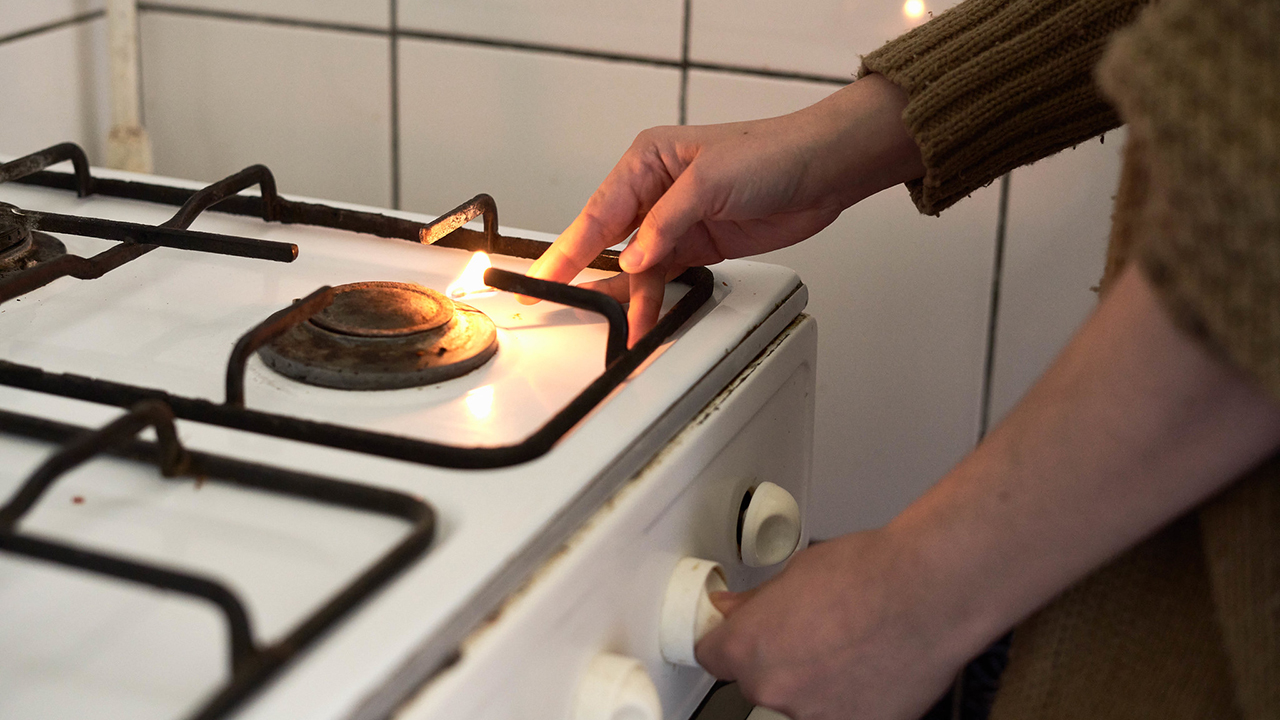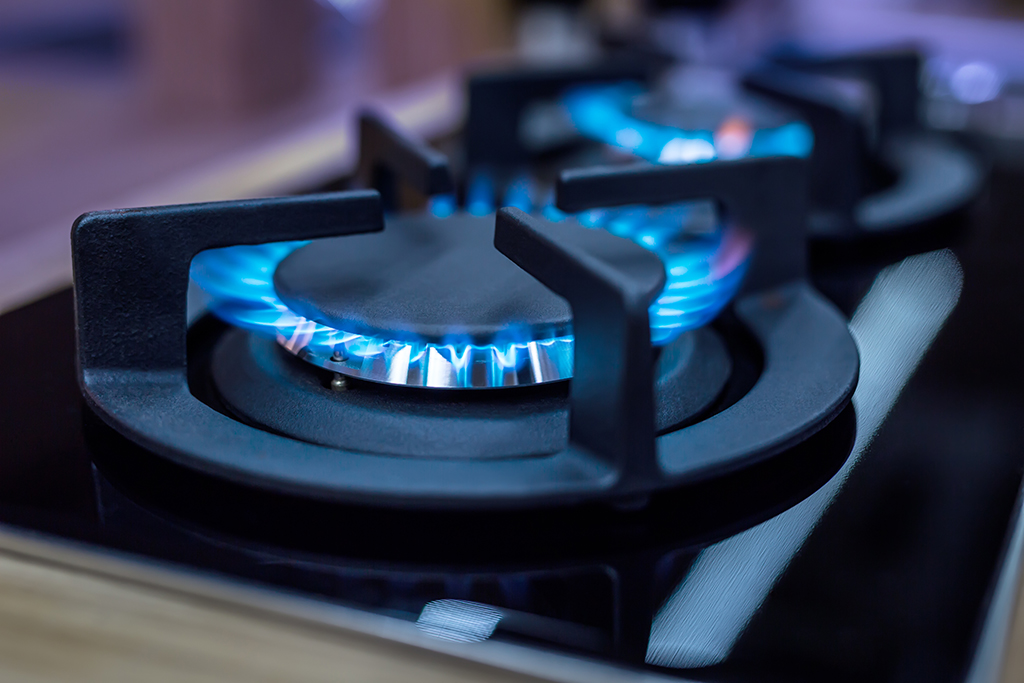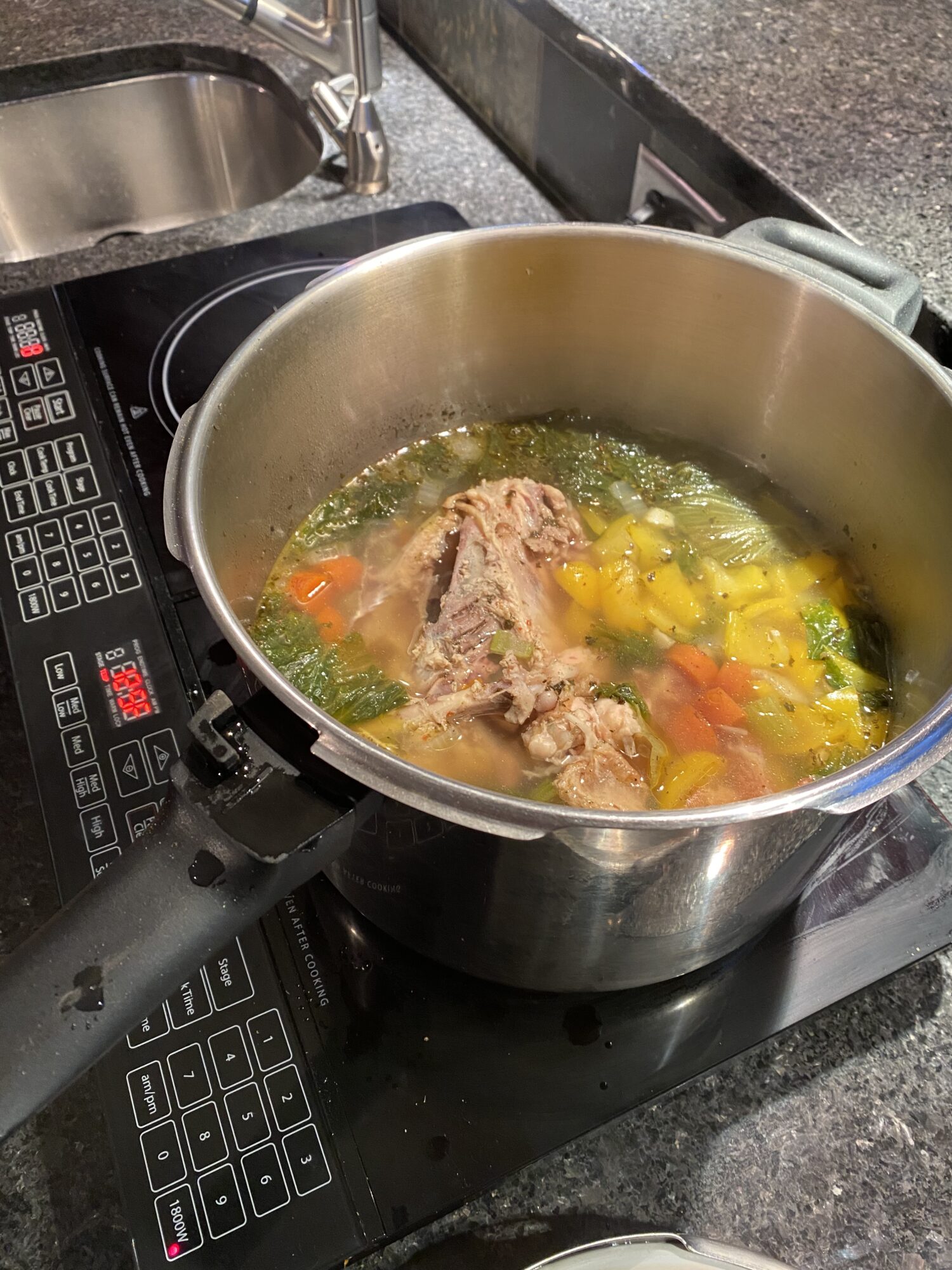
This summer, Fresh Energy was fortunate to add Dr. Curt Nordgaard to our Buildings department. He has had no trouble finding his place in a team that is used to taking a multifaceted approach to policies to cut carbon pollution from Minnesota buildings. Dr. Nordgaard is a pediatrician at Hennepin Healthcare in Minneapolis as well as a fossil gas and health consultant who has published studies on the air quality of fossil gas infrastructure.
Always interested in learning more about how energy choices impact our lives, I sat down with Dr. Nordgaard for a conversation about how gas stoves affect our health, how we can reduce or eliminate the health risks associated with using a gas stove, and why it’s such an important issue for Minnesota.
Can you tell me about your professional experience as a pediatrician and fossil gas and health consultant?

I went to medical school at the University of Minnesota, trained as a pediatrician at Boston Medical Center and Boston Children’s Hospital, then worked as a pediatrician at a community health center in the Dorchester neighborhood of Boston. I also began providing technical support as a consultant to local advocacy groups that were working on fossil gas, which eventually led me to begin researching the health implications of fossil gas in the home.
Last summer, I moved back to Minnesota and am continuing my practice as a pediatrician. Joining Fresh Energy has been a great opportunity for me to continue working on fossil gas and health in my home state.
How did you first become interested in studying the health effects of gas stoves and other gas appliances, and what is something that has surprised you in this work?
What laid the foundation for my interest in gas stoves was really the time I’d spent caring for children with asthma as a pediatrician. Helping take care of kids with asthma is really rewarding, but it’s especially fulfilling to find ways to prevent them from getting asthma in the first place.
At the same time, I was reviewing reams of regulatory filings and data on the composition of fossil gas as part of my research on fossil gas. I was recruited to help conduct a study on the composition of natural gas from kitchen stoves, which eventually became a peer-reviewed study we published last year describing the potentially harmful chemicals leaked into homes with a gas stove. Since we know from other studies that stoves can leak gas even when they’re not on, it raises the question of whether these chemicals affect children with asthma.
Now that a year has passed since our study was published, what surprises me most is how difficult it can be to appreciate the relationship between indoor air pollution and our health.
We can’t see or smell air pollution at lower but nonetheless harmful concentrations, so it’s as if we can’t understand how it affects our health if we can’t sense it. That’s why science is so important: it helps us measure and understand things we can’t directly experience, and it’s helped us understand that even air pollution in the home we can’t see or smell can still serve as a trigger for asthma, heart attacks, or a host of other health problems.
Your Energy Matters.
Clean energy is a critical climate solution!
From inspiring stories to actionable insights and practical tips, get everything you need to make an impact in our monthly e-newsletter.
Sign Up Today!What are the main health concerns with gas stoves, and how can it affect families? How do you approach discussing this with parents during their visits to you as their child’s pediatrician?
Really, I think one of my major concerns is that the research we have about the health effects of gas stoves is still relatively limited. There’s a lot we do know—but there’s still a lot we have left to learn about how gas stoves affect our health. Right now, the clearest relationship between gas stoves and human health is regarding childhood asthma.
We know that the amount of air pollution released by a gas stove is not trivial. Gas stoves affect indoor air pollution in two ways: from harmful pollutants that are released from unburned gas and also from burning the gas itself.

The pollutants from the unburned gas from a gas stove is what my research focused on. We know that most gas stoves, if not all, leak some amount of gas into the home. And that unburned gas has concerning pollutants. It contains benzene, which has a variety of health risks and is most widely known as a carcinogen that can cause certain leukemias and lymphomas. Unburned gas also contains toluene and xylenes, which are toxic to the nervous system. Our gas stoves are unfortunately emitting these pollutants in our home even when it’s not in use.
When you are actually using a gas stove, it also releases a host of other pollutants from burning the gas itself. It produces nitrogen dioxide, which is a toxic pollutant that’s an irritant to the airway, which is why it contributes to asthma and asthma symptoms. Nitrogen dioxide has also been associated with overall increased mortality and specifically death from respiratory and cardiac causes. Burning gas in a stove also produces a category of compounds called aldehydes, some of which are known or suspected carcinogens like formaldehyde. It also releases particulate pollution, carbon monoxide, and other harmful pollutants in your home.
As I’ve researched and learned more about gas stoves and childhood asthma, I’ve started to bring it up more often with families when discussing how to control triggers for their child’s asthma. I’ve found that families are very receptive to this. Some have heard about health risks associated with gas stoves in the media, and others have suspected the stove might already be affecting their child. When you’re using the stove and can smell the fumes from it, parents may recognize that it’s probably not a good thing for their child with asthma. My practice in caring for kids with asthma now frequently incorporates asking if the family cooks with a gas stove and how they can reduce the risks from it.
There’s a lot of healthy folks that have used a gas stove for their entire life without noticing negative side effects from it. Can gas stoves really be that bad for our health?
Certainly, not everyone with a gas stove in the home has asthma. But what we can’t see as individuals is that the likelihood of our child having asthma or asthma symptoms is higher when you have a gas stove in the home. Think about smoking. Will smoking a half a pack of cigarettes every day give you emphysema or lung cancer? Maybe not. But I think most people realize nowadays that it’s going to make it more likely, so maybe we should not smoke and thereby reduce our risk of getting lung cancer. The logic is the same: gas stoves are a health risk in the same way that smoking cigarettes is a health risk. You as an individual could be fine, but some people will not be.
What can people do to reduce the health risks of using a gas stove? It can be prohibitive for homeowners to switch from a gas stove to electric, and many folks who rent don’t have the option to switch. How can people mitigate the risk?
The only way to eliminate the health risk from a gas stove is to replace it. But there are three things you can do to reduce the health risks of your gas stove if you can’t replace it.
First, you can buy an inexpensive electric induction countertop unit with one or two cooking elements. These are small and portable, and you can do a lot of your cooking on them and substantially reduce the amount of gas you burn in your home. This is great for those who rent because you can take it with you if you move. The same logic applies to other electric appliances: if you use your stove to heat water in a kettle, you can use an electric kettle, which is generally faster anyways. If you can use a microwave to re-heat leftovers, that’s a great option.
The second thing you can do is use the range hood above your gas stove when you’re cooking, as long as it vents outside. It won’t remove all the pollution from the gas stove, but it will make a big difference. Unfortunately, this isn’t usually helpful for people who rent, because many of these range hoods don’t vent outside, but just blow the air pollution back into the kitchen.

The third way you can reduce indoor air pollution is by increasing ventilation by opening a window. This is simple, accessible, and affordable, but obviously isn’t ideal. In Minnesota, it’s going to be too cold in the winter for it to be effective, and in the summer months we’re now seeing more days of high outdoor air pollution from wildfire smoke, which is also bad for your health.
The clearest solution to reduce your health risks is to replace your gas stove with an electric stove. There are generally two options: Induction, which costs more but performs as well or better than gas in most ways, and non-induction. Non-induction used to mean old-fashioned stoves with resistance coils, but appliance retailers now have more modern options that are very convenient for cooking, too.
How is indoor air quality, as it is impacted by gas stoves and appliances, an equity issue?
One way that air pollution from gas stoves is an equity issue is because some people don’t just use their stove for cooking, but for supplemental heating as well—which is extremely dangerous. The amount of indoor air pollution generated by using a gas stove for heating is substantial, and it leads to higher health risks including childhood asthma, pneumonia, or respiratory tract infections. People might think that folks aren’t using gas stoves to heat their home, but the most recent data from the American Housing Survey in Minnesota from 2021 found that roughly one in 200 homes in Minnesota are using their gas stove for supplemental heating.
Think about someone who owns or is renting a poorly insulated home, for example, who may rely on inefficient space heaters and gas stoves for supplemental heating over the winter. That’s a real problem for Minnesotans, and it leads to real health risks that are disproportionately placed on under-resourced families.
Another equity problem is that under-resourced households are more likely to have poor range hood ventilation, which means the air pollution isn’t venting outside. As we discussed before, there are elevated health risks associated with that.
We’ve talked about what individuals can do, but what role do you think state and federal officials should play in helping remedy the negative health effects of gas stoves?
First, since gas stoves really do impact air quality and increase childhood asthma risks, it’s worth looking at whether these products should have additional measures taken to improve their safety.
The simplest of these would be to label gas stoves as potentially harmful to your health, just as we do for camping stoves. Most people wouldn’t consider using a camping stove in their kitchen, and while household gas stoves are tuned to burn gas differently, they both still emit air pollution into the home with health risks. Gas stoves and range hoods could be better designed to reduce air quality impacts, and building codes could be modified to better ventilate the air pollution outside.

Some parts of the country aren’t allowing gas to be installed in newly constructed homes, and while that’s probably not the most appropriate approach in all instances, it’s worth mentioning that some municipalities and counties have seen the benefits of electrifying the home in terms of the climate and our health.
Finally, there are incentives in the Inflation Reduction Act (IRA) for families to replace their gas stove with an electric stove. The Justice40 provisions also ensure that electrification is more accessible to under-resourced homes, which is a big step forward.
State officials will be critical in bringing those IRA benefits to households in Minnesota, and that will have a real benefit for reducing pollution, reducing healthcare costs, and improving the health of Minnesota’s children. There’s a real win-win policy effort underway right now, and that’s hopeful.
Thanks for sitting down with me to talk about the health effects of gas stoves, Dr. Nordgaard! We’re so glad you’re on the team working on these issues, and I know our readers will be hearing more from you across our print and digital communications soon. Maybe even a podcast episode soon? Stay tuned!
